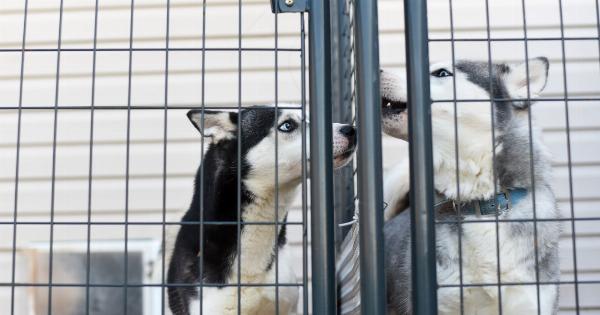Adding a second dog to your household can be an exciting decision, but it’s essential to carefully consider a few important factors before welcoming a new furry friend into your home.
While the idea of having multiple dogs can bring joy and companionship, it’s essential to ensure that you are fully prepared for the responsibilities and challenges that come with it. Here are seven crucial factors to consider before bringing a second dog into your family:.
1. Assessing Your Current Dog’s Temperament and Needs
The first and most crucial factor to consider is your current dog’s temperament and needs.
Are they friendly and sociable with other dogs, or do they tend to be more territorial or anxious? Understanding your current dog’s personality is essential in determining if they would be compatible with a new canine companion. Additionally, consider your current dog’s exercise and training requirements to ensure that adding a second dog won’t overwhelm your ability to meet each dog’s needs individually.
2. Selecting the Right Breed or Mix
Choosing the right breed or mix to complement your current dog’s temperament and energy levels is another vital consideration. Some breeds are more prone to dominance or aggression, while others are known for being friendly and sociable.
Research various breeds or mixes to find a dog that is likely to get along well with your current dog. Consider factors such as size, energy levels, exercise needs, and trainability when selecting the right breed for your household.
3. Space Availability
Take into account the space available in your home and yard. Adding a second dog means having enough room for both dogs to live comfortably without feeling cramped or confined.
Ensure that your home has enough space for each dog to have their own designated areas, including separate sleeping spots, feeding stations, and play areas. A lack of space can lead to stress and conflicts between the dogs.
4. Financial Considerations
It’s vital to evaluate the financial implications of owning a second dog. Dogs require food, veterinary care, grooming, toys, and other supplies, and these expenses can quickly add up.
Consider the cost of vaccinations, regular check-ups, spaying or neutering, flea and tick prevention, and emergency veterinary care. Additionally, factor in the cost of training classes and potential behavior modification if the dogs don’t get along well initially. Ensuring that you have the financial resources to provide for two dogs is crucial.
5. Time and Availability
Adding a second dog means doubling your time and availability. Dogs require attention, exercise, training, and companionship. Consider whether you have enough time to dedicate to each dog individually.
If you work long hours or frequently travel, it may be challenging to provide adequate time and attention to both dogs. Dogs that are left alone for extended periods can become bored, anxious, or develop behavioral problems.
6. Training and Socialization
Proper training and socialization are essential for both the existing dog and the new addition. Make sure you have the time, patience, and knowledge to train and socialize both dogs individually.
It’s important to introduce the dogs in a controlled environment and gradually allow them to interact. Seeking guidance from a professional dog trainer or behaviorist can be beneficial in navigating the introduction process and ensuring a smooth transition for both dogs.
7. Managing Potential Issues
Lastly, consider potential issues that may arise when introducing a second dog. Dogs are individuals with their own personalities, and conflicts or disagreements can occur, especially during the initial adjustment period.
You may face challenges such as resource guarding, territorial behavior, or personality clashes. Having a plan in place to manage and address potential issues is crucial for creating a harmonious and balanced multi-dog household.
Adding a second dog can be a rewarding experience for both you and your furry friends if you are well-prepared and fully understand the responsibilities involved.
By considering these seven important factors beforehand, you can ensure a smooth and successful integration of a new dog into your family.






























